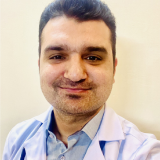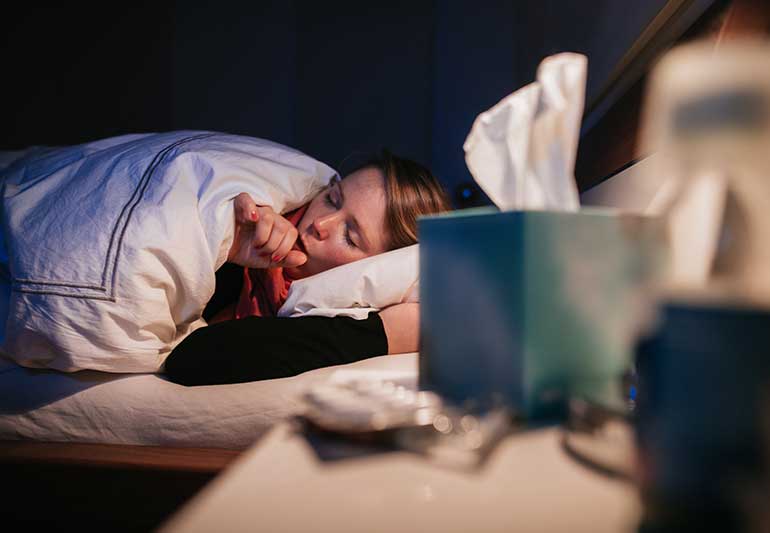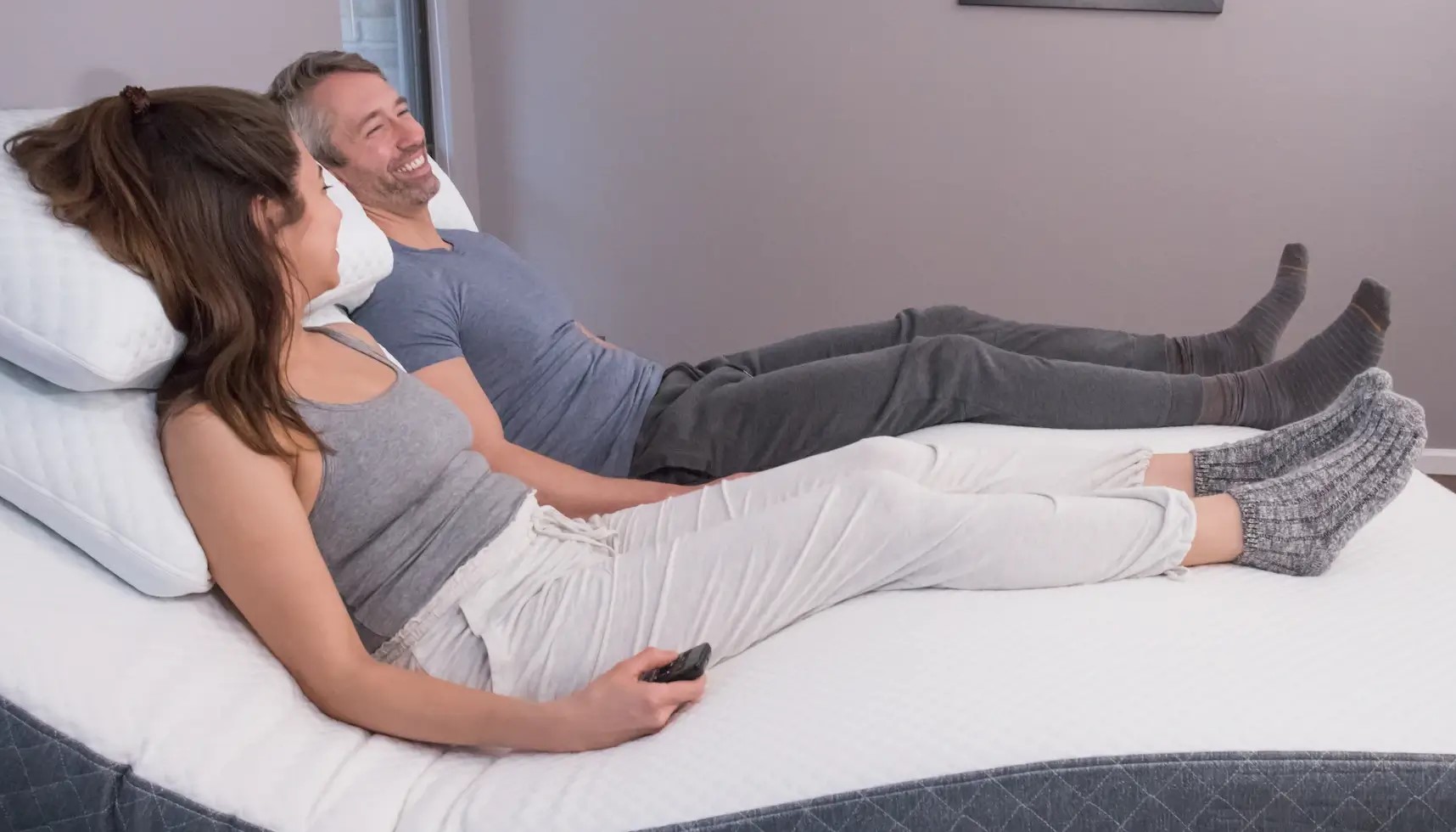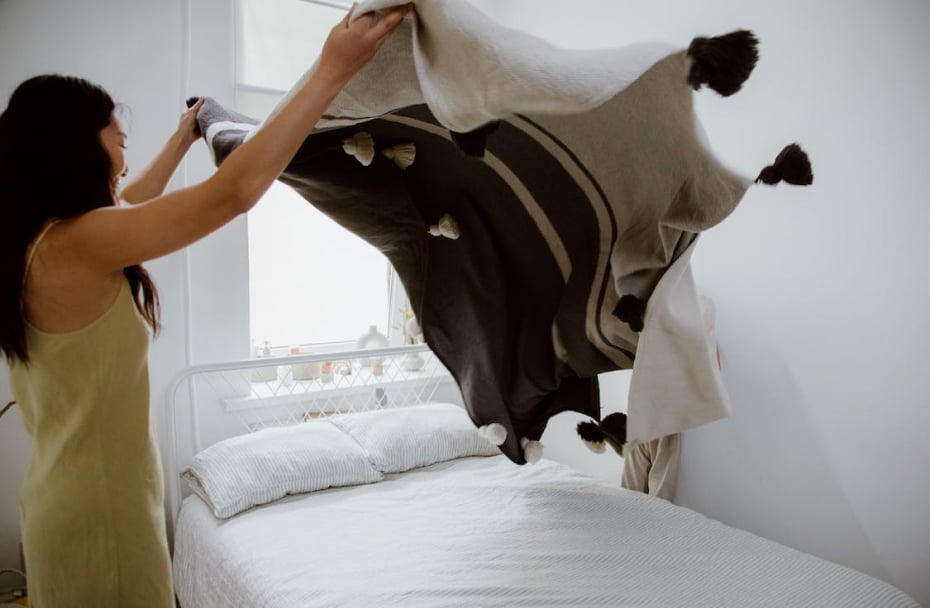



Do you snore loudly and wake up with a dry mouth? And what are your days like- are you often tired and easily irritable? If so, you could be suffering from sleep apnea- a common sleep disorder that interrupts your sleep hundreds of times each night.
Luckily, sleep apnea is treatable using a continuous positive airway pressure machine. A CPAP machine is basically a device that uses a motorized fan to deliver filtered air under pressure.
Stick around as we walk you through CPAP machines, how they combat sleep apnea symptoms, and who they are most suitable for.
What is CPAP?
CPAP stands for continuous positive airway pressure. This compact device blows filtered air gently up your nostrils to promote more comfortable and natural breathing. CPAP machines are considered the gold standard in treating obstructive sleep apnea and mixed apnea. The latter combines obstructive sleep apnea (OSA) and central sleep apnea (CSA).
CPAP machines have significantly improved recently in a bid to meet different people’s needs. Whether you want the best sleep apnea machine for traveling, side sleeping, or mouth breathing, your doctor can prescribe the right brand and model.
Different CPAP machine brands and models vary in shape and size. But all of them have similar basic components:
Machine- the base unit, which is basically a small box that houses a motorized fan and one or two filters.
Filter- CPAP machine filter purifies your indoor air by removing dust, smoke, pet hair, and other allergens, thus protecting your lungs. Cleaning and replacing these CPAP supplies is crucial for getting the best out of your CPAP therapies and maintaining your machine.
Humidifier- some CPAP machines have a built-in water tank that adds moisture to the pressurized air. Humidification is the first line of defense in preventing dry mouth and throat irritation due to CPAP usage. If your machine lacks this feature, standalone humidifiers for CPAP devices are available for purchase.
Tube- a flexible hose that connects the CPAP machine to the mask. A typical CPAP tube is six feet long, but some manufacturers also have 4-foot, 8-foot, and 10-foot tubing. You should replace CPAP machine tubing every three months because of condensation and general wear and tear.
Mask- this is the part that connects with the face. The CPAP machine delivers pressurized air to a cushioned mask from where you breathe it through the nose, mouth, or both. In most cases, the mask will come complete with a headgear frame that holds it in place.
Types of CPAP Masks
The four common CPAP masks are full-face, hybrid full-face, nasal pillow, and nasal masks. Understanding the pros and cons of each is the first step towards getting the best type of CPAP mask. Your doctor can also help you choose when you go for a CPAP prescription.
Full-face CPAP masks
Possibly the oldest of all CPAP mask styles, full-face CPAP masks cover the mouth and nose. Full-face style masks are the best for mouth breathers and people who generally struggle to breathe through the nose when sleeping.
The major disadvantage of a full-face CPAP mask is its bulky size, which makes it cumbersome and claustrophobic. Its large surface area also makes it more likely to leak as it gets squished on the pillow.
Hybrid full-face CPAP masks
Hybrid CPAP masks are an improved version of traditional full-face CPAP masks. They allow you to breathe through your nose or mouth but don’t go over the bridge of the nose. That’s to say, they are more compact and less claustrophobic.
Nasal pillow CPAP masks
Nasal pillow CPAP masks cover your nose only and have two little prongs that go inside your nostrils. These prongs make it possible to get a perfect seal, even with facial hair.
Because of their design, nasal pillows are the smallest and least obtrusive of all types of CPAP machine masks. Thus, they are best if you move around at night and if you want a mask with a wider vision range for reading, using your phone, or watching TV in bed.
Another reason you’ll probably love these masks is that they have fewer components, meaning they are easy to put on and off.
On the downside, nasal pillow CPAP masks only cover the nose, meaning they won’t be effective if you breathe through the mouth. Secondly, they are not the best CPAP masks for high pressure because they shoot the air directly into your nasal cavity. That title goes to standard and hybrid full-face masks.
Nasal CPAP masks
These models are similar to nasal pillow masks but don’t have prongs that go inside your nostrils. It’s much easier to get a size that fits with nasal CPAP masks than nasal pillow masks. Another pro of nasal CPAP masks is that you don’t get that annoying feeling of direct pressure or having the pillows up your nostrils. They are also incredibly compact and less claustrophobic compared to full-face CPAP masks.
One disadvantage of nasal CPAP masks is that they may be a hit or miss with the seal, especially when the pressure gets high. On top of that, these masks are not ideal if you breathe mainly through your mouth when asleep.
How does CPAP Work?
To understand how CPAP machines work, we first need to talk about how we breathe. During normal sleep, the muscles relax and enter a paralyzed state known as atonia. However, your upper airway muscles have to maintain some muscle tone and physical activity to keep the airway open.
Sometimes these muscles may relax too much, causing a partial airway blockage that manifests itself as snoring.
People suffering from OSA also experience episodes of collapsed upper airway muscles. However, the relaxation is pronounced and often causes the sufferer to stop breathing in sleep, either wholly or partially. The lack of oxygen in the brain causes it to wake up and activate the muscles to hold the throat open. Subsequently, the air gets through, and the brain gets back to sleep.
This cycle repeats hundreds of times throughout the night, sometimes without your knowledge. As a result, you don’t get into the deep sleep stage, which may cause irritability and daytime fatigue.
So, what does a CPAP machine do?
A CPAP machine provides a continuous stream of positive pressure to the airway, preventing it from collapsing during sleep.
CPAP vs. BiPAP vs. APAP
CPAP is currently the most successful type of positive airway pressure in treating OSA. But your doctor or sleep specialist may also recommend BPAP or APAP, depending on the diagnosis.
In BPAP (a.k.a BiPAP: bilevel positive airway pressure), the machine pushes out air at a higher pressure level when inhaling and a lower level when exhaling. BPAP machines are commonly prescribed for patients who need help breathing in and breathing out. BiPAP may be a better choice if you’re suffering from conditions like COPD, Central Sleep Apnea, Complex Sleep Apnea, and Congestive Heart Failure, among others. Your doctor may also recommend BiPAP if CPAP is not working for you.
APAP stands for Automatic Positive Airway Pressure. Instead of pushing out air at a continuous (fixed) level, APAP machines automatically adjust throughout the night, depending on your breathing needs. APAP machines detect the resistance in your breathing as you enter different sleep stages or switch sleeping positions to regulate pressure accordingly. These machines are commonly recommended for people with COPD, CSA, congestive heart failure, and apnea due to chronic opioid use.
Who Needs CPAP?
There are different treatment options for sleep apnea. After a sleep study, your doctor may recommend any of the three positive airway pressure therapies highlighted above, depending on your unique health needs.
Continuous positive airway pressure is the most preferred treatment for obstructive sleep apnea. It has consistently been proven to reverse signs of sleep apnea and reset the normal sleep cycle.
What is Sleep Apnea?
Sleep apnea is a serious and frightening sleep disorder in which you stop breathing momentarily when sleeping. If you snore loudly and wake up with morning headaches, you could be suffering from sleep apnea.
Chronic sleep apnea doesn’t go away on its own. If left untreated, it may lead to life-threatening complications, including heart problems and stroke.
There are three main types of sleep apnea:
Obstructive sleep apnea (OSA)- this is the most common type of sleep apnea. OSA happens when the tongue and throat muscles relax too much, completely blocking the airway. This causes you to gasp for air and awaken briefly in order to re-establish airflow. CPAP is the first recommended therapy for OSA.
Central sleep apnea (CSA)- unlike OSA, this breathing disorder is not due to physical airway obstruction, meaning it doesn’t cause snoring. Instead, CSA is neurological. It happens when the brain fails to signal the body to breathe at a regular rhythm. Central sleep apnea is characterized by cessation or reduction of airflow for up to 10 seconds. More common in men than women, CSA is often treated with BiPAP.
Complex/mixed sleep apnea- this disorder is also known as treatment-emergent sleep apnea or mixed sleep apnea. It happens when an individual with obstructive sleep apnea develops central sleep apnea when receiving CPAP therapies. The good news, however, is that treatment-emergent CSA is often temporary.
Symptoms of Sleep Apnea
Central sleep apnea is often asymptomatic. However, when the symptoms show, they are pretty much similar to those of OSA, with the exception of chronic snoring.
These are the most common symptoms of sleep apnea:
-
Loud and chronic snoring that gets disrupted by snorting or gasping (OSA and mixed sleep apnea)
-
Repeated nighttime awakenings and difficulty falling asleep (insomnia)
-
Increased bathroom visits at night
-
Morning headaches
-
Excessive fatigue and sleeping during the day
-
Irritability and mood changes
-
Witnessed episodes of gasping for air or choking
-
High blood pressure
-
Trouble concentrating and memory problems
What Causes Sleep Apnea?
The two major types of sleep apnea have different causes and risk factors, although there are a few similarities.
Common causes and risk factors for obstructive sleep apnea are:
-
Older age- the risk increases as you get older although OSA can occur at any age
-
Testosterone- because men have more of this hormone, they are 2-3 times more likely to suffer from OSA
-
Supine sleeping position
-
Obesity
-
Nasal congestion
-
Family genetics and physical features like a small lower jaw and a large neck size
-
Smoking
Common causes of central sleep apnea are:
-
Older age
-
Being male
-
High altitude- the risk of developing CSA is higher among people living in higher altitudes
-
Prolonged use of opioids
-
Heart disorders
-
Health conditions that affect the brain stem, including stroke, brain infection, and cervical spine infections
CPAP as a Treatment: Benefits
CPAP is not the only treatment option for obstructive sleep apnea. Other ways of treating OSA without CPAP include alternative PAP therapies, surgery, weight loss, and the use of tongue-retaining devices.
But with all these alternatives, why is CPAP the most prescribed treatment for obstructive sleep apnea? Well, it turns out CPAP does more than prevent breathing interruptions.
Here are 9 sleep and health benefits of CPAP:
-
Reduces sleep interruptions allowing you to enjoy more deep sleep
-
Improves sleep resulting in more daytime energy and reduced fatigue and sleepiness
-
Can be used as a ventilator when necessary
-
CPAP therapy can help control type 2 diabetes
-
Consistent CPAP treatment helps lower your risk of having a heart attack and stroke
-
May help reduce glucose and cholesterol levels in the blood
-
Studies show that persistent CPAP therapy may help lower the risk of hearing loss among sleep apnea patients
-
A CPAP machine can keep snoring from hurting or ruining relationships
-
CPAP benefits increase with persistent and longer-term use
Conclusion
A fact about sleep apnea is that you could have it without knowing it. You may not be aware of the hundreds of sleep interruptions this breathing disorder causes throughout the night. What you remember is the chronic fatigue that affects your productivity, family, and health.
A CPAP machine may help if you suspect that sleep apnea is costing you restful sleep. But keep in mind that CPAP machines are class II medical devices. In other words, you need to start with a quick appointment with your doctor for diagnosis and prescription.







